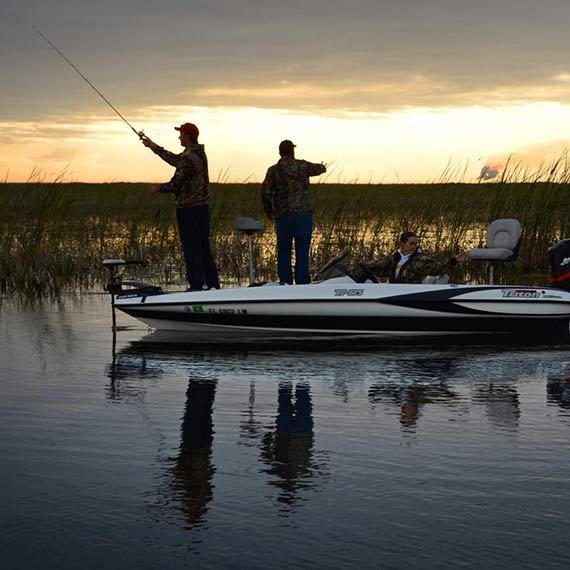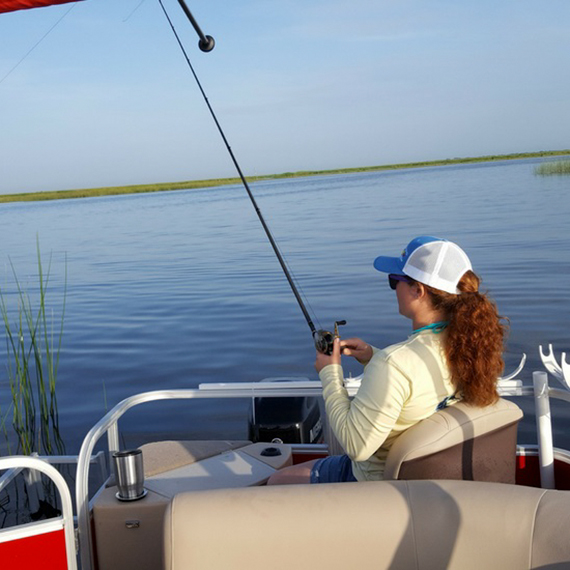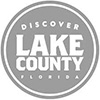



Okeechobee County, FL TDC
Okeechobee, FL
Yes, There is Freshwater Fishing in Florida
Lake Okeechobee is the largest lake in Florida and is located in the center of the state. It covers 730 square miles, has 135 miles of shoreline and an average depth of 9 feet. It is the second-largest freshwater lake in the continental US after Lake Michigan. The lake is well known for its abundant fishing and hosts many fishing tournaments for both professional and recreational anglers.
Lake Okeechobee is fed by rainfall and the Kissimmee River and is referred to as Florida's inland sea. It is important for the local ecology, providing habitat for a variety of fish and wildlife, including wading birds and freshwater species. The lake and its connected waterways play a crucial role in the water cycle, serving as a source of flood control, irrigation for farms, and a source of drinking water for the surrounding communities. The lake's waters eventually flow into the Everglades estuary, creating a unique and important ecosystem.
Lake Okeechobee is a prime destination for fishing enthusiasts, offering some of the best freshwater fishing in Florida. It is known as the bass capital of the world and is surrounded by a range of amenities including campgrounds, lodgings, marinas, and boat ramps. Visitors can plan a customized fishing vacation with ease. For those seeking adventure, the Okeechobee Waterway provides a unique opportunity to explore the area by boat. Built in 1937 to control storm flooding, this man-made system of channels stretches across southwest Florida, from Fort Myers to Stuart. For a change of pace, a quick trip to the coast for some saltwater fishing is easily accessible from Stuart, located just an hour north of West Palm Beach. There, families can enjoy a range of activities and attractions.
Lake Okeechobee is home to a diverse array of wildlife, including birds, wild hogs, manatees, turkeys, and alligators. The lake is particularly famous for its game fish, including the best bass fishing in the world. In addition to bass, visitors can also catch bream, black crappie, sunfish, catfish, pickerel, bowfin, and gar. Anglers are encouraged to participate in the TrophyCatch and Big Catch programs. TrophyCatch is a program run by the Florida Fish and Wildlife Conservation Commission that collects data on trophy bass and promotes catch-and-release fishing, with a chance to win a boat. Big Catch is a state-wide angler recognition program with categories for anglers of all skill levels and 33 different freshwater fish species. Participants must use an active hook-and-line method and submit a photo of their catch. The Big Catch website also features the state's fishing records, both certified and uncertified.
Lake Okeechobee is renowned for its bass fishing, as it is home to some of the largest freshwater fish species in South Florida. Due to the lake's shallow waters and the absence of natural predators, bass are at the top of the food chain, allowing them to grow as large as 15 pounds. The lake is home to several different bass species, including white bass, sunshine bass, spotted bass, black bass, butterfly peacock bass, shoal bass, and striped bass. The uncertified record for largemouth bass currently stands at 15 pounds 5 ounces.
With temperatures ranging from the mid-50s to the high-90s, there really isn’t a bad time to visit Lake Okeechobee.
If you’re looking for black bass, the most popular freshwater game fish in Florida, you’ll want to visit in March and April when the fish move into shallow waters to spawn. The redear sunfish also spawn during this time—look for them around the full moon.
Bluegill, however, reproduce throughout the summer, when they congregate in large beds in shallow water.
Black crappie, or “specks,” are deep water fish and are often caught in the cooler months. Do your school fishing offshore. You might also try in the early spring when they move to deep cover to spawn. Night fishing is especially productive during the summertime months.
Striped bass, white bass, and sunshine bass are stocked annually by the conservation commission. You’ll have the most success catching them in the fall through the spring months.
The butterfly peacock bass, a non-native species stocked by the wildlife commission, is only caught during daytime hours in open water. They are favored game fish and can reach up to nine pounds.
Learn more about Lake Okeechobee fishing from the Okeechobee Tourism Developent Council.




